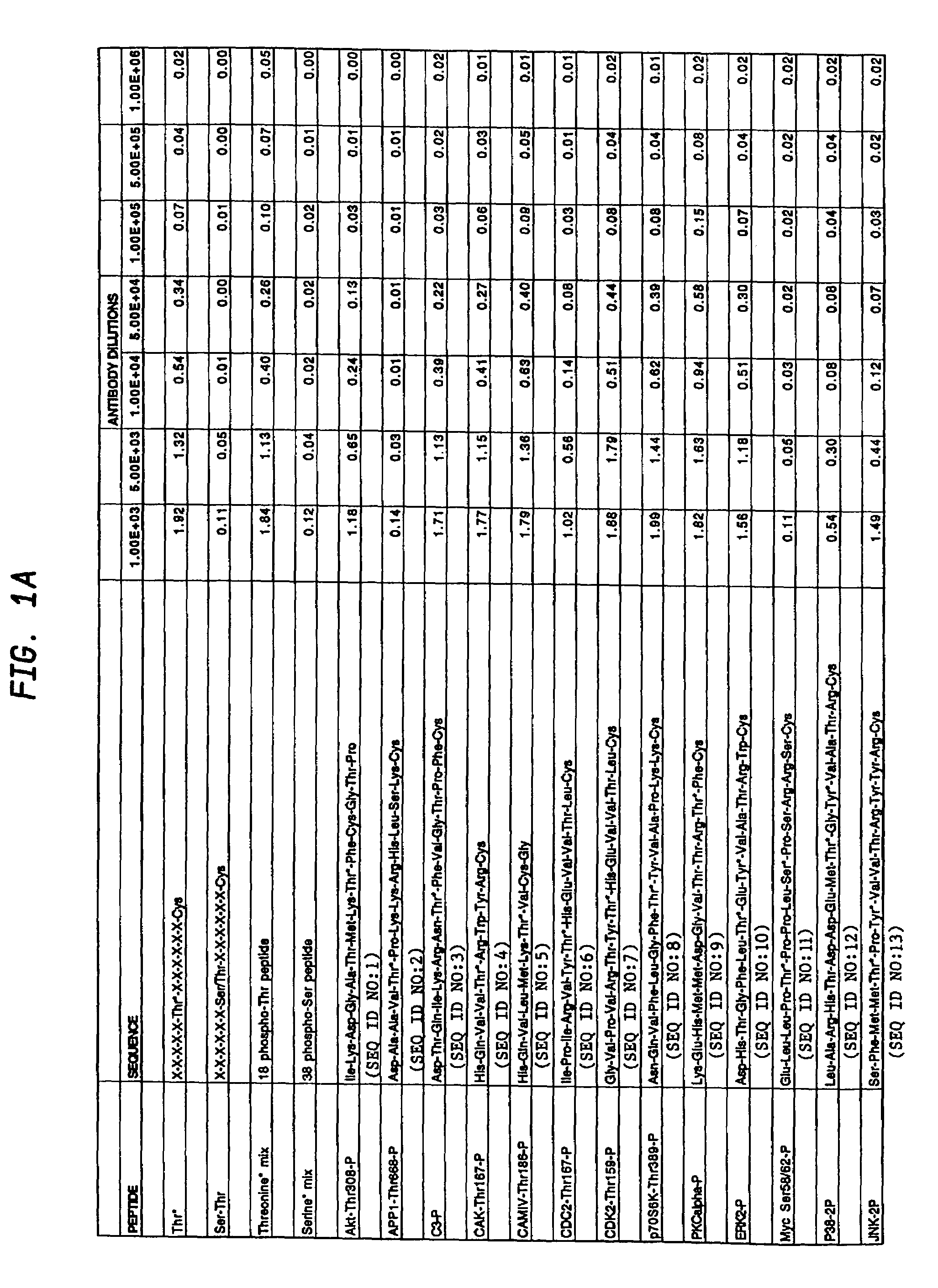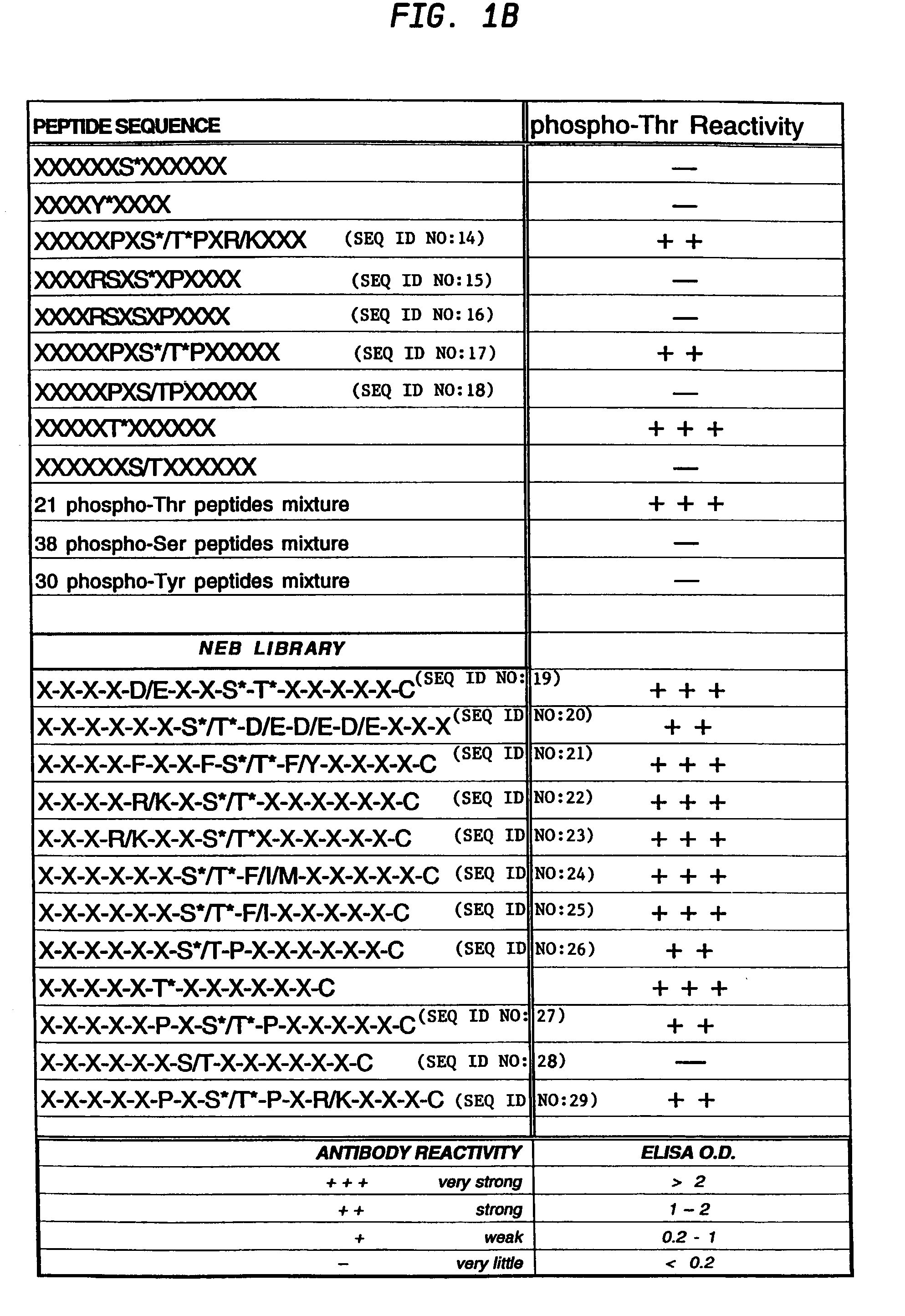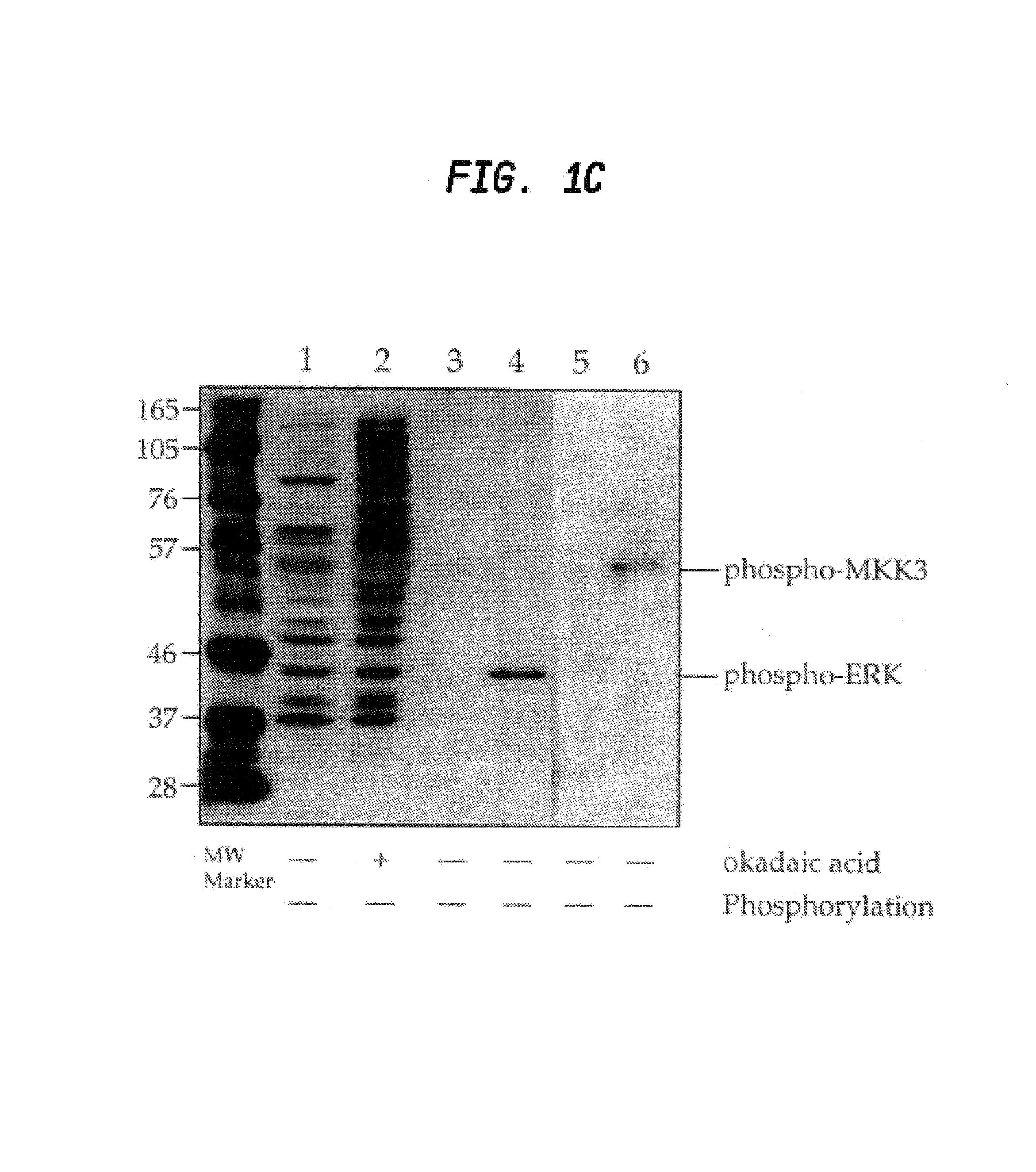Production of motif-specific and context-independent antibodies using peptide libraries as antigens
a technology of context-independent antibodies and peptide libraries, which is applied in the field of motif-specific, context-independent antibodies, can solve the problems of limited success of using the above mentioned techniques to produce similar antibodies for phosphoserine and phosphothreonine, low affinity, and limited the utility of currently available phosphoserine and phosphothreonine antibodies
- Summary
- Abstract
- Description
- Claims
- Application Information
AI Technical Summary
Benefits of technology
Problems solved by technology
Method used
Image
Examples
example 1
Context-Independent Phosphothreonine Antibodies
Synthesis of Peptide Library Antigens:
[0112]Phospho-specific antibodies that react with any protein containing phosphorylated threonine residues, i.e that bind phosphothreonine independently of the surrounding amino acids, were obtained by synthesizing a highly degenerate peptide library XXXXXXThr*XXXXXXC where X=all 20 amino acids except cysteine and Thr*=phosphothreonine.
[0113]The phosphothreonine peptide library was synthesized by standard F-Moc solid phase peptide synthesis using an ABI peptide synthesizer and using mixtures of each amino acid during degenerate coupling reactions. Degenerate peptides were synthesized using an ABI model 433A peptide synthesizer, using FastMoc chemistry (Fields et al., Pept. Res. 4:95–101 (1991), hereby incorporated by reference herein) at a scale of 0.085 mmol. Fmoc / NMP chemistry utilizing HBTU amino acid activation (Dourtoglou et al., Synthesis 1984: 572–574 (1984), Knorr et al., Tetra. Let. 30:1927...
example ii
Protein Kinase Consensus Site-Specific Phosphoantibodies
MAPK-Consensus Recognition Sites: PXS*P
[0128]A peptide library of the preferred site for MAPK phosphorylation PXS*P was synthesized (FIG. 2a) substantially as described in Example I. In addition to an equimolar mix of phosphoserine and threonine, amino acids at two other positions were also fixed; proline at −2 and proline at +1. This library was coupled to KLH and injected into rabbits as described for phosphothreonine. IgG from the most promising rabbit was protein A purified and passed over a nonphospho-Thr / Ser peptide library column. The nonadsorbed fraction (flow through) was applied to a phospho-PXS*P column, eluted at low pH, dialyzed and tested for phosphospecificity by ELISA using phospho- and nonphosphopeptides.
[0129]Antibodies affinity purified in this fashion reacted strongly with the phosphorylated PXS*P peptide library but did not react with the nonphosphothreonine / serine library (see FIG. 2a). ELISA results also ...
example iii
Protein Kinase Consensus Site-Specific Phosphoantibodies
14-3-3 Binding Site: RSXS*XP
[0133]Antibodies that identify 14-3-3 targets were obtained by synthesizing a peptide library: XXXXRSXS*XPXXXXC where S* is phosphoserine and X represents any amino acid and C is cysteine. The above 14-3-3 phosphopeptide library was synthesized by standard F-Moc solid phase peptide synthesis using an ABI peptide synthesizer and mixtures of each amino acid except cysteine during degenerate coupling reactions, as discussed in Example I.
[0134]The 14-3-3 phosphopeptide library was coupled to KLH and injected into rabbits as described above for phosphothreonine and PXS*P. Antisera from the most promising rabbit was purified over protein A and adsorbed over a nonphospho-14-3-3 peptide library column. The flow-through of this column was applied to a phospho-14-3-3 column eluted at low pH, dialyzed and tested for phosphospecificity by ELISA using phospho-and nonphospho-14-3-3 peptide libraries. These affinit...
PUM
| Property | Measurement | Unit |
|---|---|---|
| pH | aaaaa | aaaaa |
| pH | aaaaa | aaaaa |
| PKA | aaaaa | aaaaa |
Abstract
Description
Claims
Application Information
 Login to View More
Login to View More - R&D
- Intellectual Property
- Life Sciences
- Materials
- Tech Scout
- Unparalleled Data Quality
- Higher Quality Content
- 60% Fewer Hallucinations
Browse by: Latest US Patents, China's latest patents, Technical Efficacy Thesaurus, Application Domain, Technology Topic, Popular Technical Reports.
© 2025 PatSnap. All rights reserved.Legal|Privacy policy|Modern Slavery Act Transparency Statement|Sitemap|About US| Contact US: help@patsnap.com



